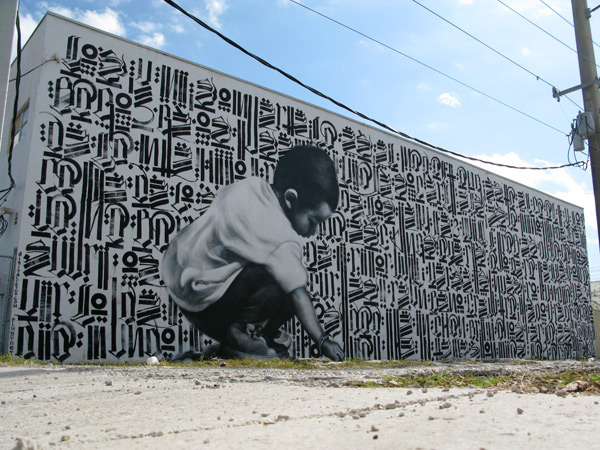
In this image, there is a wide range in tone. The black and photographic elements provide variation in shades of black and white. There are lots of grey tones in between also. The use of tone in this image serves as a visual tool that "indicate and express dimension." (Dondis, p.48.) It also adds depth and detail, and make the images appear crisp and real.
The tones in this picture interact with the Dondis basic element, Dimension. The shadows on the ground and the way the light hits the three figures show that that they are in fact 3-dimensional.
As you can see, the designer of this image utilized the color red. Everything in the photograph is colored red, except for the three figures. This attracts the eye and also helps the three men stand out amongst their surroundings. The three dimensions of color (hue, saturation, and brightness) are also apparent in the image. In particular, there is a red hue, which is a primary of elementary hue that is also a "provoking hue" according to Dondis. The red color that is used is a saturated one; one that is "highly charged with expression and emotion," (p.51.) It is also fairly bright.
Furthermore, according to Dondis, "Red means danger, and love, and warmth, and life...." (p.50.) This image reflects these emotions, because one can create a story behind the photographs that embodies these feelings.
The red color also interacts with the Dondis basic element, Dimension. Because everything but the three figures is colored red, it places them in the foreground and emphasizes the space between them and the background.
 This piece done by the Trust Your Struggle collective exemplifies many visual techniques such as intricacy, accent, and understatement. Clearly, the swirling white lines are very detailed and interesting. They are very intricate in nature and capture the eye. The pinkish swirl on the left is visualized as an accent because it differs in color from the rest of the image, and stands out. I also believe that this design exemplifies understatement because the though message it is giving, "Trust Your Struggle" implies a harsh reality that comes with hardship and perseverance, the image is light, delicate, and beautiful. It could have been bolder and more graphic with images of struggle and oppression. However, the artists chose to highlight the beauty of people that endure struggle and shed light on the unseen strength that is acquired through overcoming obstacles.
This piece done by the Trust Your Struggle collective exemplifies many visual techniques such as intricacy, accent, and understatement. Clearly, the swirling white lines are very detailed and interesting. They are very intricate in nature and capture the eye. The pinkish swirl on the left is visualized as an accent because it differs in color from the rest of the image, and stands out. I also believe that this design exemplifies understatement because the though message it is giving, "Trust Your Struggle" implies a harsh reality that comes with hardship and perseverance, the image is light, delicate, and beautiful. It could have been bolder and more graphic with images of struggle and oppression. However, the artists chose to highlight the beauty of people that endure struggle and shed light on the unseen strength that is acquired through overcoming obstacles. This 'Panther Power and Tupac' poster designed by Jesus Barraza includes several visual techniques mentioned by Dondis. There is economy, singularity, and assymetry. The poster exemplifies economy in that it uses a minimal range of color (neutral pallette), and only shows outlines of the figures instead of photographic detail. The artist created the image specifically to be simple and bold, in order to allow for fast and effective printing. The design exemplifies singularity in that the main focus of the image is Tupac Shakur, who is standing with his fist raised on the left side of the poster. Furthermore, the design exemplifies assymetry, because the heaviest content is placed off-center, allowing the eye to focus more-so on the left side of the image, as opposed to the right.
This 'Panther Power and Tupac' poster designed by Jesus Barraza includes several visual techniques mentioned by Dondis. There is economy, singularity, and assymetry. The poster exemplifies economy in that it uses a minimal range of color (neutral pallette), and only shows outlines of the figures instead of photographic detail. The artist created the image specifically to be simple and bold, in order to allow for fast and effective printing. The design exemplifies singularity in that the main focus of the image is Tupac Shakur, who is standing with his fist raised on the left side of the poster. Furthermore, the design exemplifies assymetry, because the heaviest content is placed off-center, allowing the eye to focus more-so on the left side of the image, as opposed to the right.









.jpg)

